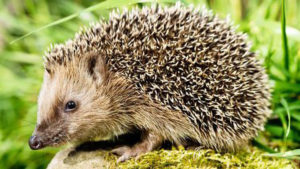With a population of 1.55 million in the UK[i], hedgehogs (or Erinaceus europaeus) are frequent and welcome visitors to many people’s gardens. They are quite a joy to behold as they scuttle about and sniff between plants and in the grass for food.
However, the population of hedgehogs is nothing compared to what it used to be, as hedgehog numbers have fallen between 33 – 77% over the past 20 years[ii]. If you love these stunning, sweet creatures as much as we do – then you will agree that it is more important than ever before that people in the UK get clued up on how to help hedgehogs. If you want to attract more hedgehogs to your garden. An important aspect of aiding these little animals is understanding their diet. If you’re considering feeding them and want to attract more hedgehogs to your garden, then reading more about their dietary needs, such as can hedgehogs eat peanuts, can be incredibly beneficial.
How to help hedgehogs
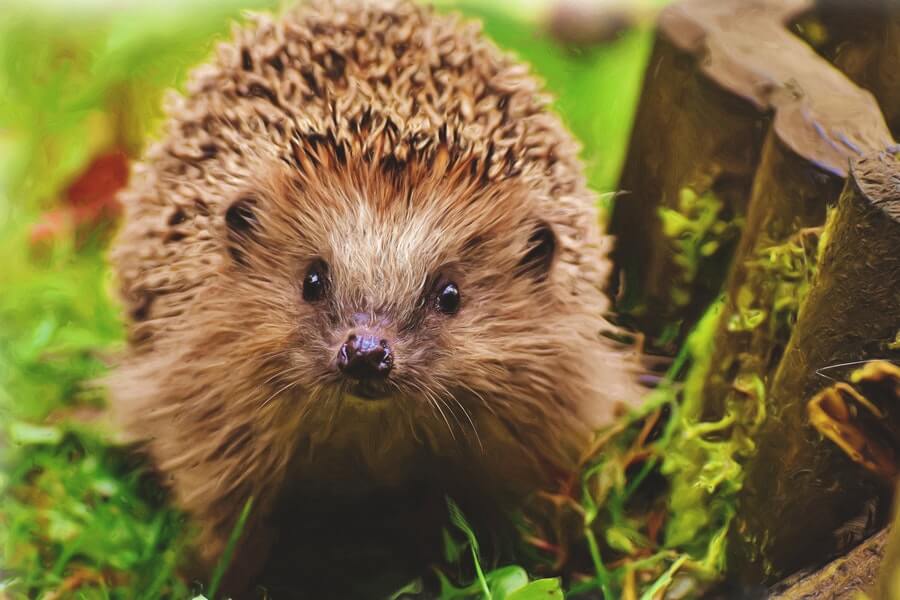
Follow our advice below to learn how to help hedgehogs in your local area.
1. Provide shelter and places to nest
Providing shelter is the number one way that you can give hedgehogs a helping hand. Having a dry, safe space will keep predators away, shelter the small mammals from cold weather, and give them a welcome space to raise their hoglets.
Constructing a hedgehog house is uncomplicated and relatively budget-friendly – you can put one together with odds and ends from your garden (before you replace your garden furniture set, you might consider using the old pieces to construct a shelter) or visit your local hardware shop for the key components. This video from the Natural History Museum explains the basics.
In short, you will need to build a sturdy structure in a shaded, ‘out of the way’ location – preferably amongst bushes or trees. Build the main structure with bricks, leaving an entryway, before constructing a roof with a sheet of wood and logs.
2. Offer clean, fresh water
Water can be hard for hedgehogs to access, especially in urban areas during very hot weather and droughts. When the mercury starts to soar, spare a thought for the hedgehogs (and any other animals that could be lurking in your garden).
Place a saucer or two of fresh, clean water in easy-to-access locations. We recommend putting them out of the way so that they feel safe whilst having a drink. Check back every few days to clean the saucer and top up their water supply.
3. Don’t use chemicals
Stop using weed killers, slug pellets and pesticides in your garden. These chemicals can make hedgehogs sick and may even kill them if ingested. Switching to natural alternatives will not only help the hedgehogs, but it will improve the biodiversity in your garden and create a safe haven for insects, birds and other animals.
4. Create a compost heap
If you don’t mind hedgehogs nesting on your property, you might consider creating a compost heap. They make very comfortable nesting spaces for the animals and attract a whole host of insects that make the perfect snack for our spiked friends. Your plants will also benefit from the compost that the heap eventually produces, just be careful to check for signs of hedgehogs before turning compost over or disturbing the heap.
5. Have a ‘wild corner’
The best environment for a set of hedgehogs is one where wildflowers are allowed to grow freely, leaves are left to return to the soil, and there are plenty of juicy bugs to eat. If you like to have a tidy garden but want to help your local hedgehogs, consider having a ‘wild corner’ that you leave alone.
6. Spread awareness
Spreading awareness about the plight of the hedgehogs is one of the most helpful things you can do. Let your friends, family, and neighbours know what you are doing to make your local area a safer place for them and encourage them to do the same.
There are plenty of charities and organisations dedicated to hedgehogs who will be happy to help and advise on any hedgehog-related questions:
How to tell if there are hedgehogs in your garden
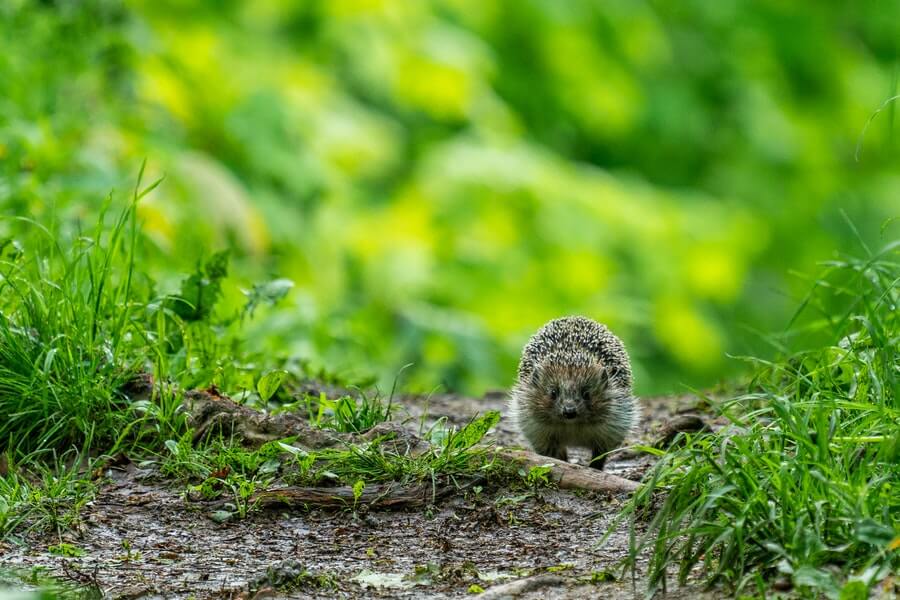
If you’re trying to find out how to help hedgehogs, there’s a chance that you believe some hogs have taken refuge in your garden. There are several easy to spot, tell-tale signs that you are hosting hedgehogs in your garden or outdoor space.
- Droppings – spotting singular, dark brown droppings around 15mm – 50mm in length is one sure sign that there are hedgehogs nearby.
- Trail camera – if you love to watch wildlife, you might consider installing a trail camera to pick up any hedgehog activity. You can pick them up for relatively low prices, but make sure you choose one with motion sensors and night vision.
- Disturbed leaves & foliage – If you are noticing that leaves and foliage in your garden have been moved or disturbed, you might have a hedgehog roaming around.
- Footprints – although they are small animals, hedgehogs can leave tracks in soft or wet soil. Take a look at your flowerbeds first thing in the morning and see if you spot any pawprints.
What to do if you find a hedgehog
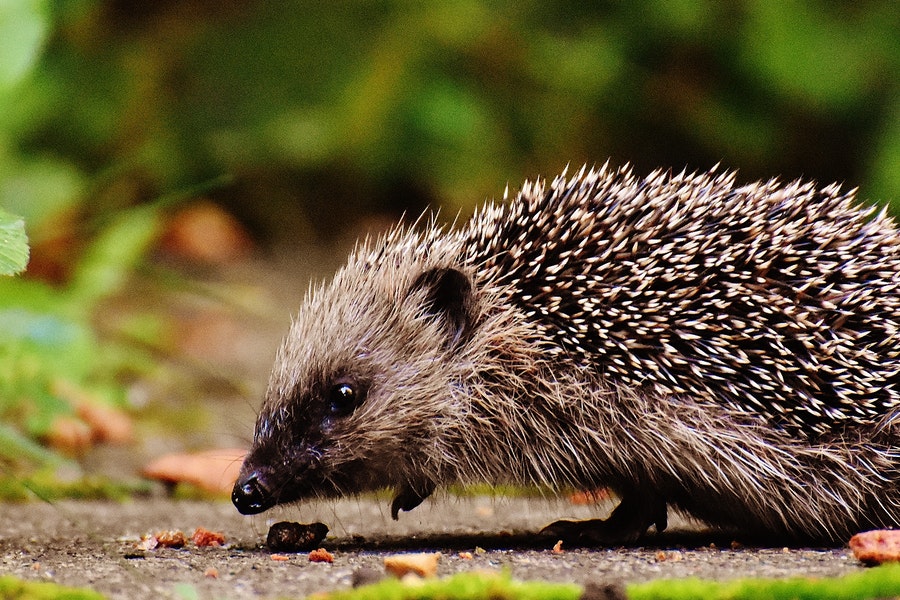
Generally, you should leave hedgehogs alone, but there are some circumstances where they may need help. Here is what to do if you find a hedgehog:
If it is healthy – leave it alone! Human contact causes undue stress to hedgehogs that may put them in a state of shock. Watch and enjoy from a distance.
If it is injured – if a hedgehog is visibly injured, appears disoriented, is staggering about or just doesn’t look right, it may need urgent help. Call the British Hedgehog Preservation Society on 01584 890801 for advice.
If you see a hedgehog ‘sunbathing’, it may be hypothermic. Use a clean towel or thick gloves to pick up the unwell hedgehog, wrap up well and place in a box with a hot water bottle filled with hot tap water. Contact the RSPCA or British Hedgehog Preservation Society.
In the winter – hedgehogs hibernate from November to mid-March, so it’s unusual to see them out and about during this time (unless they are moving to a different nesting site). If you see any hedgehogs around across winter, keep an eye on them. If they appear ill or injured, they might need help. Otherwise, leave them alone.
During the day – hedgehogs generally only come out at night unless their nest has been disturbed or they are preparing a new nest. If you see one in the day, the same rules as above apply. Leave the hedgehog alone unless it seems injured or unwell.
If you do find a hedgehog or see one in your local area, we’d recommend submitting your sighting to the Big Hedgehog Map, which helps us to understand the state of the hedgehog population in the UK. You can also find out how many hogs have been sighted near you!
What can you feed a hedgehog?
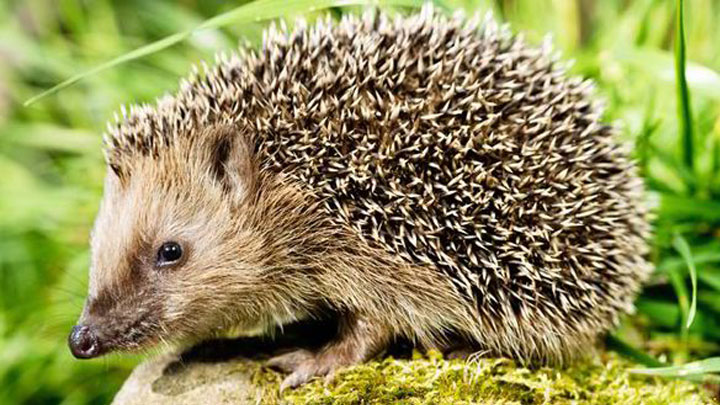
Hedgehogs’ natural diet consists of insects like beetles, caterpillars, worms, fly larvae and millipedes. Supplementing a hedgehog’s diet by leaving out food is okay, especially if you have created a space for them to shelter and nest. But you must make sure you are leaving the right food out for them, and you should be prepared for unwanted visitors to take advantage of it (foxes and cats will be drawn to any free food).
You should start putting out food around the time that hedgehogs finish hibernating (March), but it is most important to feed them as the summer comes to an end, as this is when they start to build up fat reserves in preparation for hibernating over winter.
You can feed hedgehogs:
- Tinned cat or dog food
- Crushed cat or dog biscuits (preferably soaked)
- Specialist hedgehog food
You cannot feed hedgehogs:
- Milk
- Bread
When feeding them, you should always:
- Clean food and water dishes to ensure diseases aren’t spread between hedgehogs
- Remove old food and refresh water often
Now you know how to help hedgehogs
Helping the hedgehogs in your area, or helping any wildlife generally, is very rewarding and can greatly benefit the species as well as the ecosystem in general. Let us know your best hedgehog-help tips and whether you’ve spotted any in your garden recently.
Learn how to help out the environment as well as the hedgehogs – read our blog on Sustainability At Home
Sources
[i] https://hedgehog-houses.com/how-many-hedgehogs-are-there-left-in-the-uk/#:~:text=The%20count%20for%20Britain’s%20hedgehogs,-In%201969%2C%20Maurice&text=the%20population%20of%20hedgehogs%20is,Scotland%20and%20145%2C000%20in%20Wales).
[ii] https://www.nhm.ac.uk/discover/news/2022/february/britains-rural-hedgehogs-see-dramatic-population-decline.html
Ryan Jenkins is a professional gardener and has been working in the gardening industry for over 25 years. This has allowed Ryan to accumulate a vast wealth of gardening knowledge which he shares on the Sefton Meadows blog.

